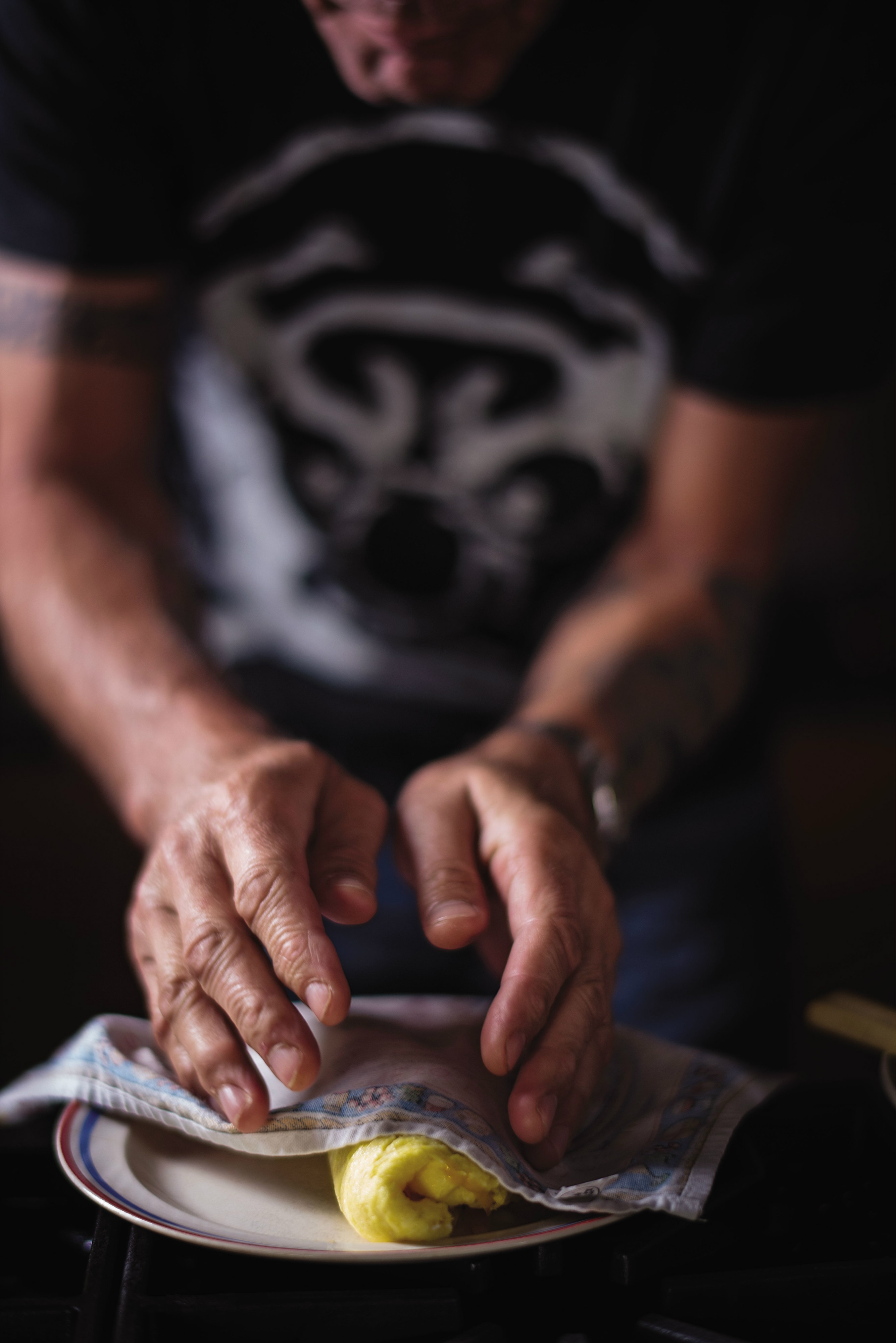How to Make a Perfect Omelette
According to Anthony Bourdain.

Excerpted from Anthony Bourdain’s new cookbook, Appetites, which was released on October 25, 2016.
Use fresh eggs, and as with scrambled eggs, break them on a flat surface and into a small bowl. Season with salt and freshly cracked pepper. I do not add milk or water. Just before cooking, and not a moment before, beat the eggs vigorously with a fork, but don’t overdo it. Texturally, you want a rippling effect between yolk and albumen—not strips of visible egg white running through your omelette (which you want in scrambled eggs), but not a homogenous, totally smooth consistency either. Beat just until uniformly yellow. No more.
In a nonstick pan, heat a little whole butter. Do not brown.
When butter is bubbling, add the eggs and immediately move them around. I use a (relatively) heat-resistant rubber spatula. Jacques Pépin uses a fork. Whatever utensil you use, move it in a figure-eight pattern, drawing the wet eggs to the center and north (12 o’clock) of the pan, letting the empty spaces that you’ve created become filled in with wet egg. Incorporate any egg splatter from the edges, not allowing anything to get crisp or more cooked than any other part.
Do not flip an omelette.
The center of the omelette should still be moist and a tiny bit wet when you remove it from the heat—what the French call baveuse.
Plating your omelette is a very important step, and while it looks tricky, it’s actually not.
Using a towel to protect your hand from heat, grasp the pan’s handle from underneath in a V-grip with one hand. Lift it up. Holding your plate in the other hand, tilt the pan onto the plate like a closing door, flopping the omelette onto the plate so it folds shut on itself.
If it looks like a pile of crap, not to worry. Lay a clean paper towel over the omelette like a blanket—like you’re putting a child to bed. With hands together almost like praying, shape the omelette into a neat crescent: fat in the center, narrower at both ends. This will also sop up any excess butter or oozing egg.
If you’re using fillings in your omelette, cook “dry” ingredients like onions, peppers, or ham in the butter in the pan before adding the egg, incorporating them into the actual omelette. Cheese, or anything else soft and likely to ooze, should be gently laid into the center of the cooking eggs just before removing from the fire and plating.
You should be able to make two omelettes at once. Probably no more. Unless you’re like me.
_______
Never miss a story. Sign up for NUVO’s weekly newsletter.




